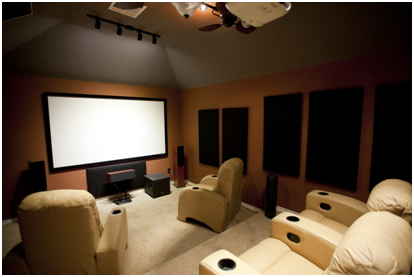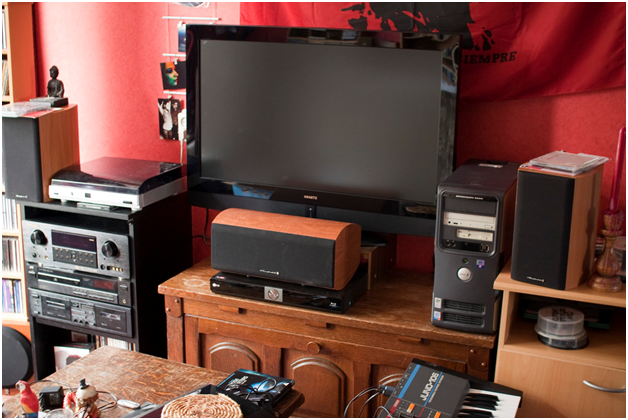If you have splashed out on some high-end home cinema hardware, then it makes sense to optimise the way that it is configured rather than settling for a sub-par entertainment experience. Here are some top tips for bringing movies to life in your living room.

Embrace Symmetry
The best seats in a fully fledged cinema are usually the most central, as they not only give you the best view of the screen but also put you an equal distance from the various speakers. The same logic applies to your home set-up, so position your TV or projector screen to ensure that the audience can see it clearly from a head-on angle while also giving you enough room to space the speakers correctly.
Speaker Positioning
There are a number of things to think about when laying out the speakers, many of which will vary depending on the type of system you have purchased, so it is always worth reading the manufacturer’s guidelines to get the best results. There are some universal hints that will help, however.
Try to keep all of your speakers at the same height where possible, whether you have a simple stereo set or full surround sound. This will help with immersion and enable every audio channel to be heard as intended.
If you have a comprehensive multimedia set-up at home which is integrated with some form of home automation system, then you may wish to take this into consideration when arranging your speakers. Concerns over the security of home automation are common, so make sure any network-enabled solution you have is properly secured, especially if Wi-Fi is involved.

Image Credit
Conquer Calibration
In most cases, a modern home cinema kit will come with the ability to calibrate itself automatically while giving you the opportunity to make some additional tweaks and changes depending on your preferences afterwards. And it is definitely recommended to run the auto-calibration, as this will give you a great base line for performance. Don’t be too scared to experiment yourself if you want to squeeze even more out of the speakers and screen.
If you are encountering an obvious issue that calibration and tinkering with settings does not fix, you can see if the issue is physical. Re-arranging the hardware in the room is your best bet in this case.


